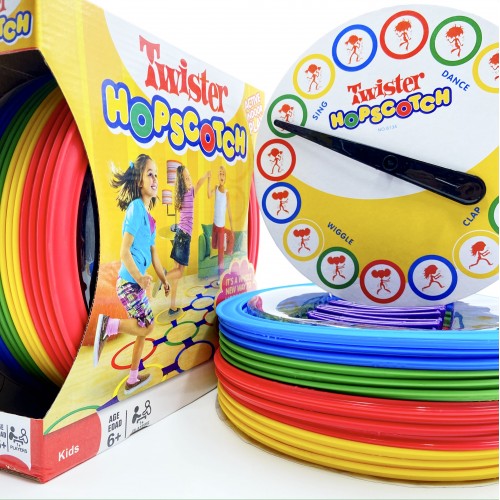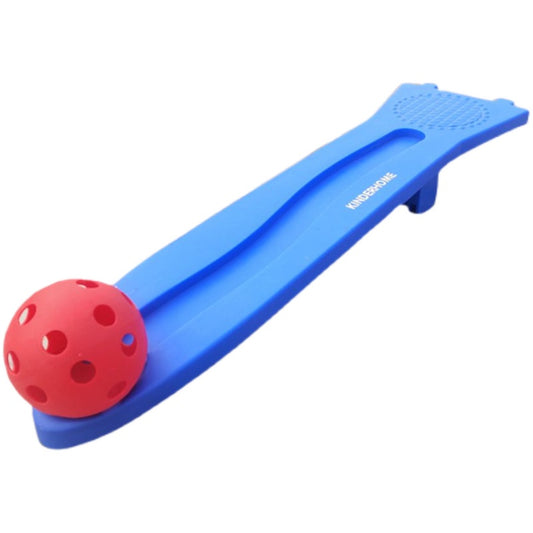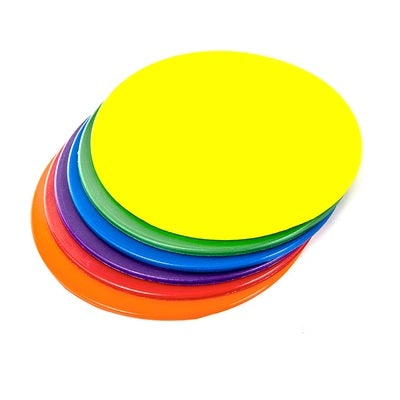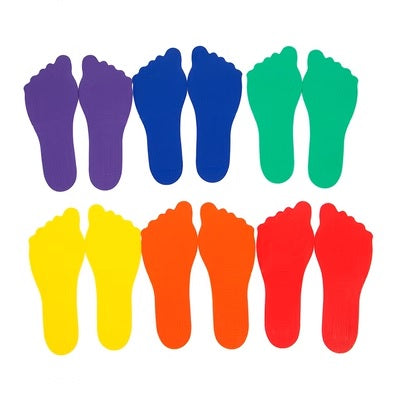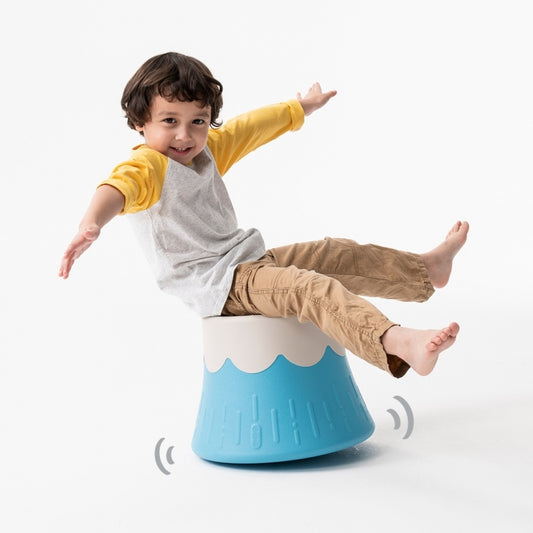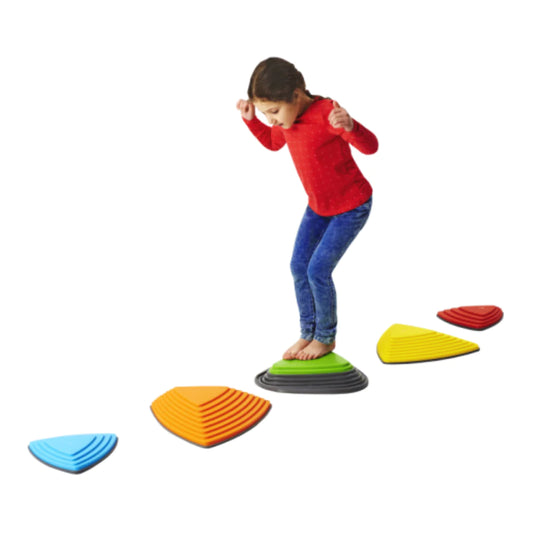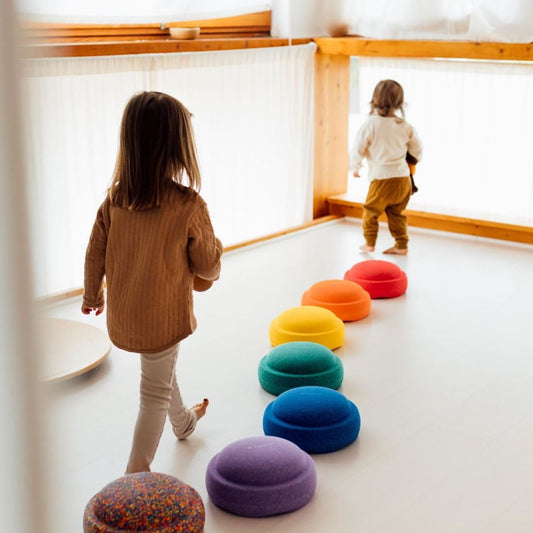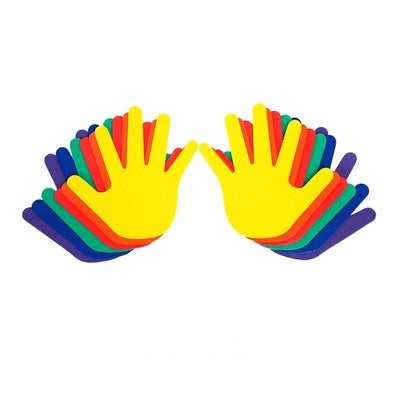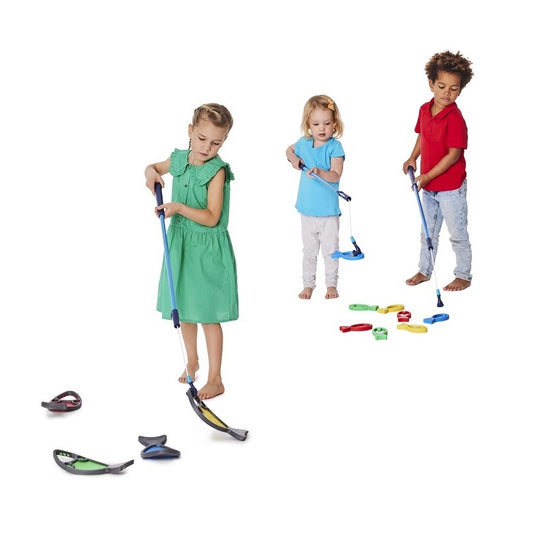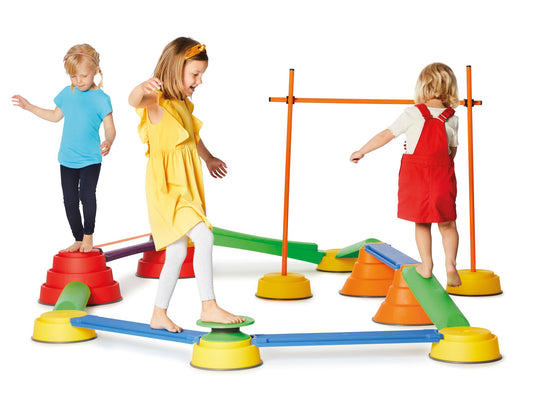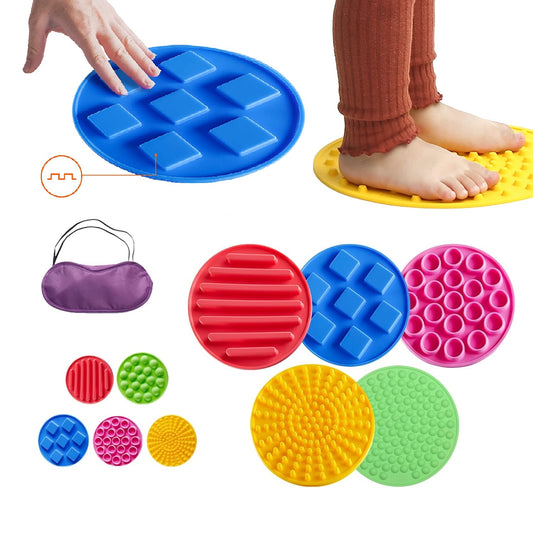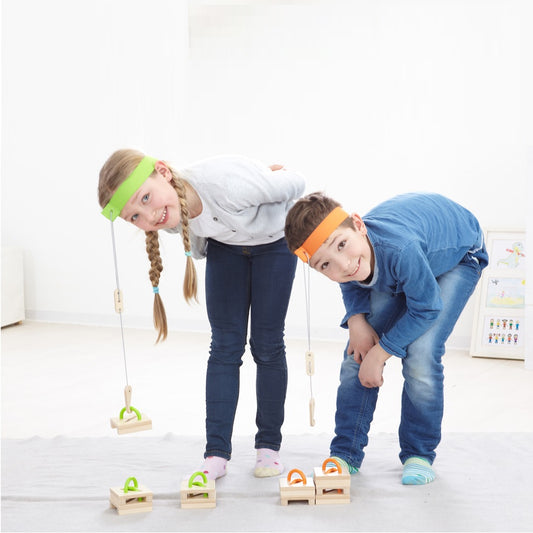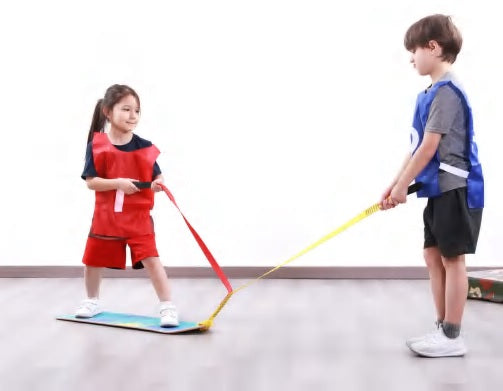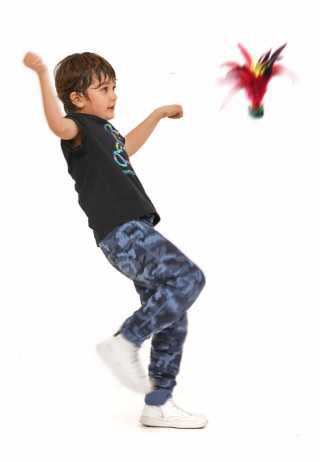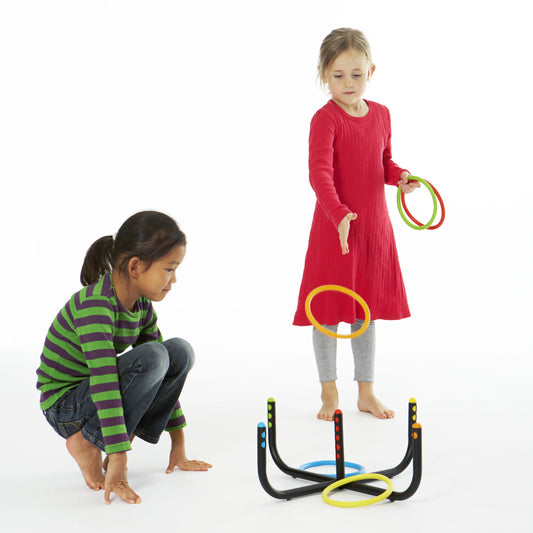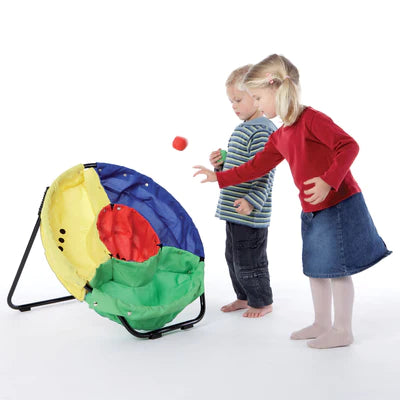Collection: Balance & Coordination 平衡與協調
Balance & Coordination 平衡與協調
什麼是兒童發展中的平衡和協調技能?
平衡是孩子在特定任務中保持受控位置或姿勢的能力。 行走、攀爬甚至坐著都需要平衡和協調。 平衡有兩種類型:動態平衡和靜態平衡。 動態平衡是指在需要移動的活動(例如行走)中保持原位的能力。 靜態平衡是指在站立或坐著等靜態任務中保持姿勢的能力。
兒童發展的協調性是指兒童能否使身體各部位以協調、功能性的方式發揮作用。 更廣泛地說,協調性是指孩子正確解釋多個訊號以完成更複雜的身體任務的能力。 例如,手眼協調要求孩子們能夠正確地解釋視覺訊息,從而讓他們能夠接住球。 這項看似簡單的任務涉及神經活動、身體控制和反射等能力。
What Are Balance and Coordination Skills in Child Development?
Balance is the ability of a child to keep a controlled position or posture during a specific task. Walking, climbing or even sitting all require balance and coordination. There are two types of balance, dynamic and static. Dynamic balance refers to the ability to stay in position during activities that require movement, such as walking. Static balance refers to the ability to maintain position during stationary tasks such as standing or sitting.
Coordination in child development refers to whether a child can get their body parts to work in a coordinated and functional manner. More broadly, coordination refers to the ability of a child to correctly interpret multiple signals to do more complex physical tasks. Hand-eye coordination, for example, requires children to correctly interpret visual information in a way that allows them to catch a ball. This seemingly simple task involves neurological activity, physical control and reflexes, among other abilities.
-
Twister Hopscotch 指令跳跳圈
Regular price HK$99.00Regular priceUnit price / perHK$169.00Sale price HK$99.00Sale -
Step & Catch Game 腳踩接球
Regular price HK$325.00Regular priceUnit price / per -
Grampus Spot Markers 6pc/ pack 圓形標誌盤 6個/套
Regular price HK$175.00Regular priceUnit price / per -
Grampus Foot Spot Markers 12pc/ pack 腳掌標誌盤 12個/套
Regular price HK$210.00Regular priceUnit price / per -
Weplay Rocking Volcano 火山搖搖
Regular price HK$526.00Regular priceUnit price / perHK$619.00Sale price HK$526.00Sale -
Gonge Bouncing River Stone 5 Pcs Set 彈力過河石5件套裝
Regular price HK$1,784.00Regular priceUnit price / perHK$2,099.00Sale price HK$1,784.00Sale -
Rainbow Stepping Stones Set 彩虹平衡踏腳石套裝
Regular price From HK$890.00Regular priceUnit price / perHK$799.00Sale price From HK$890.00 -
Grampus Hand Spot Markers 12pc/ pack 手掌標誌盤 12個/套
Regular price HK$210.00Regular priceUnit price / per -
Gonge Body Control - Fishing Game Set of 5 身體擺動訓練 - 釣魚遊戲5件套裝
Regular price From HK$749.00Regular priceUnit price / perHK$1,099.00Sale price From HK$749.00Sale -
Gonge Build N' Balance 建構平衡訓練組合
Regular price From HK$168.00Regular priceUnit price / perHK$269.00Sale price From HK$168.00Sale -
Sensory Discs Matching Game Set of 10 感官盤配對遊戲 10件裝
Regular price HK$598.00Regular priceUnit price / per -
Spielwelle Head Up & Down Body Control Game 頭頭疊身體控制訓練遊戲
Regular price HK$1,299.00Regular priceUnit price / perHK$1,539.00Sale price HK$1,299.00Sale -
Grampus Land Sled Board 陸地雪橇板
Regular price HK$497.00Regular priceUnit price / per -
Grampus Feathery 羽毛毽子
Regular price HK$25.00Regular priceUnit price / per -
Gonge Ring Toss 彩虹套圈遊戲
Regular price HK$960.00Regular priceUnit price / perHK$1,299.00Sale price HK$960.00Sale -
Gonge Throwing Game 彩虹投擲遊戲
Regular price HK$1,980.00Regular priceUnit price / perHK$2,799.00Sale price HK$1,980.00Sale

